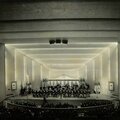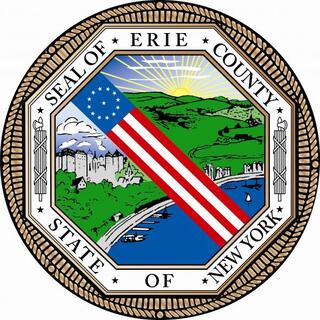
The exhibits featured at the new
Matthew Biddle Photo 2013
The first thing you notice when stepping inside the Colored Musicians Club Jazz Museum is the vibrant mural by local artist William Y. Cooper, which sits just before the exhibit space. The colorful piece reflects the passion that has poured out of this building for almost 80 years. Western New York Heritage covered that history extensively in our Winter 2011 issue (copies still available), and at that time, plans were beginning to take shape for this museum, which teaches visitors about the club, the musicians who made it sing and Local 533, a union for black musicians who were refused entry into the all-white Local 43.
The museum space was originally home to the union offices, and the club – which was and still is located upstairs – was a place for musicians to gather socially after gigs. Legends, like Dizzy Gillespie, Ella Fitzgerald, Billie Holliday and Duke Ellington, have all graced this stage – and still do every Sunday night since 1934.
“On any given night, we don’t know who’s going to show up for our Sunday night jam,” says the museum’s curator, Danny Williams. On a recent Sunday, among others, renowned local musician Will Holton and Najee, one of the top saxophonists in the world, showed up for an open jam session. Three years ago, two-time Grammy winner Diana Krall strolled in, looking to relax and perform after a show in
Other local musicians who performed here and found great success include Doristine Tydus Blackwell, who Williams describes as a “cross between Ella and Sara Vaughn;” violinist Stuff Smith; pianist Pete Johnson; and saxophonist Grover Washington Jr., who recorded “Just the Two of Us” with Bill Withers, among other classics. There are listening stations throughout the museum to introduce these performers to an entirely new audience.
When racial attitudes started to change in the
Designed and fabricated by Hadley Exhibits, the downstairs space opened anew this past September as a museum dedicated to preserving both the club’s history and the history of jazz music. It’s a major difference from the space my colleagues saw as they put together our original story, “History Written with Jazz,” for Winter 2011.
Showing us around, Williams points out a number of fascinating artifacts; the section on Local 533, for instance, includes a signed document from Aretha Franklin, who had to pay $19 to perform since she wasn’t a union member. Along the wall, we are introduced to, and enveloped by, various styles of music and dance through informative panels and fun videos, like one from 1955 that shows the moonwalk performed on the variety show, Showtime at the Apollo – nearly 20 years before Michael Jackson made it popular. “Do you know the difference between ragtime and boogie-woogie?” Williams asks. Well, we do now.
After touring jazz museums in Kansas City, Harlem and New Orleans, organizers found a decided lack of interactivity and strived instead to make hands-on features a hallmark of their museum, located at 145 Broadway in Buffalo. “We wanted to have a visual feast, as well as an auditory feast,” Williams says. As such, one display presents a series of instruments and shows what they sound like individually and in harmony. At another station, visitors are invited to become a musical engineer and experiment with various dynamics and sounds to arrange a popular piece, like “Over the Rainbow.”
This summer, the club will host the eighth annual Queen City Jazz Festival on July 27. The museum is open









